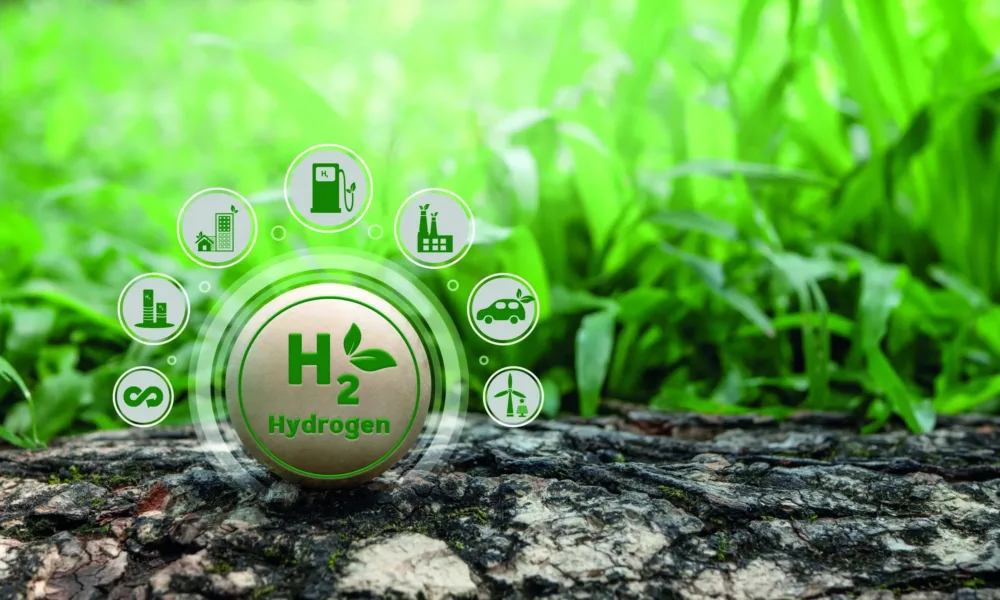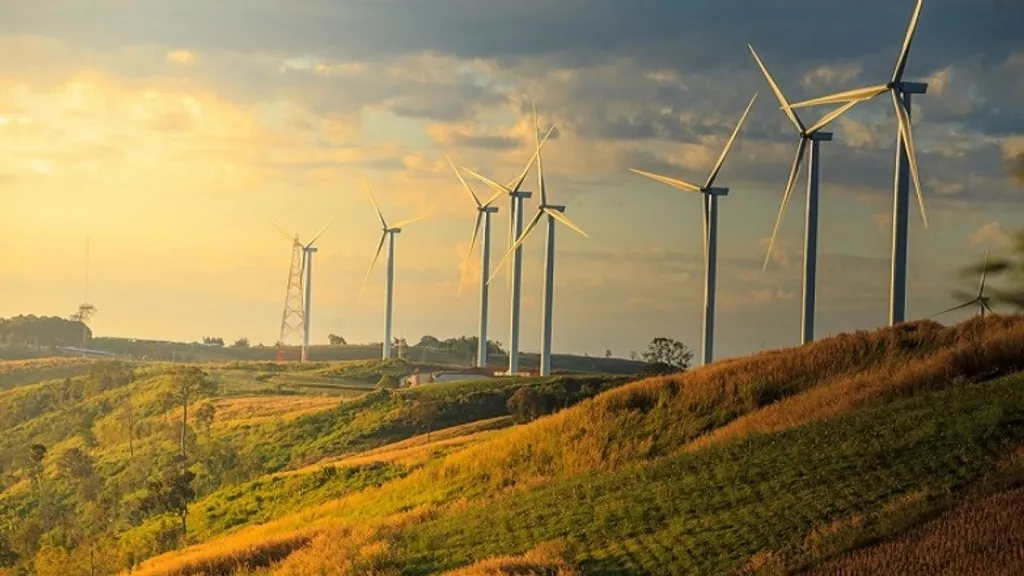When conversations about climate change come up, the mood is often heavy—rising global temperatures, devastating wildfires, melting ice caps, and uncertain futures. Yet in the midst of these challenges, there are also beacons of hope, stories that remind us humanity is capable of turning the tide. One such story is unfolding in Uruguay, a small South American country that has quietly become a world leader in renewable energy.
In just over a decade, Uruguay went from being almost completely dependent on imported fossil fuels to generating around 95% of its electricity from renewable sources. Wind turbines now rise gracefully above cattle pastures, solar panels glisten under the sun, and hydropower plants balance energy demand with natural flow. It’s a transformation that has brought energy independence, affordability, resilience, and climate leadership to a nation of just 3.5 million people.
This is not merely a technical shift—it’s an uplifting human story about collaboration, vision, and the belief that even small nations can make a big difference. Let’s explore how Uruguay achieved this remarkable transformation, the lessons it offers the world, and why it should inspire all of us to believe that change is not only possible—it’s already happening.
Table of contents
- The Energy Picture Before Transformation
- The Turning Point: A Bold National Decision
- Wind Energy: The Hero of the Story
- Solar, Hydro, and Biomass: Completing the Puzzle
- Achievements: The Bright Side of the Story
- Human Stories Behind the Transformation
- Challenges Faced Along the Way
- Lessons for the World
- Looking Beyond Electricity: The Next Frontier
- A Timeline of Transformation
- Why Uruguay’s Story is Uplifting
- Conclusion: A Beacon of Hope for the World
The Energy Picture Before Transformation
To understand the magnitude of Uruguay’s accomplishment, we must rewind to the early 2000s. At that time, the country faced a series of interconnected energy challenges:
- Dependence on Imported Fossil Fuels
Uruguay had no significant oil or natural gas reserves, which meant the nation had to import most of its fossil fuels. This dependency made the economy vulnerable to global price swings, often forcing households and industries to pay high electricity bills. - Unreliable Hydropower
Hydroelectricity had historically been the backbone of Uruguay’s energy system, but droughts periodically crippled supply. When river levels dropped, the country had no choice but to import costly fossil fuels. - Frequent Blackouts and Shortages
Power cuts were not uncommon. Businesses struggled, and citizens bore the brunt of an unstable system. - Economic and Environmental Concerns
Heavy reliance on fossil fuel imports was a burden on the national economy and contributed to growing carbon emissions.
It was clear Uruguay needed a new path. What makes this story uplifting is not just that change came—but how it came.
The Turning Point: A Bold National Decision
The watershed moment arrived in 2005, when Uruguay embarked on an ambitious plan to radically reshape its energy system. Unlike many countries where climate and energy debates stall in political deadlock, Uruguay achieved something extraordinary: cross-party consensus.
Political leaders, regardless of ideology, recognized the urgency of the energy crisis. They put aside differences and forged a long-term vision. At the same time, the government actively engaged the private sector and civil society, creating a rare alignment of stakeholders who all stood behind a common goal: energy sovereignty through renewable resources.
The country adopted a framework of public-private partnerships that encouraged large-scale investment in clean energy while guaranteeing stable contracts and fair returns for producers. Uruguay’s model balanced strong state oversight with private innovation, ensuring both trust and efficiency.
This unity of purpose proved to be the foundation of Uruguay’s success.
Wind Energy: The Hero of the Story
Today, if you travel across Uruguay, one of the most striking sights is the wind farms. Vast white turbines turn steadily against a backdrop of wide-open plains, where cows graze below and skies stretch endlessly above.

Uruguay’s geography makes it perfect for wind power: flat landscapes and steady breezes sweeping in from the Atlantic Ocean. Taking advantage of this, the government rolled out policies to attract wind investments. The result has been phenomenal.
By 2020, wind energy provided about 40% of Uruguay’s electricity—a proportion that rivals or exceeds even some of the most advanced economies. Unlike fossil fuels, which fluctuate in price and supply, the wind is free and abundant.
For rural communities, wind farms also brought new opportunities. Farmers lease land to energy companies, creating steady side income while continuing traditional agriculture. Local workers are employed in turbine construction and maintenance. This is clean energy with a human face—tangible benefits for everyday people.
Solar, Hydro, and Biomass: Completing the Puzzle
While wind leads the way, Uruguay’s clean energy story is a symphony of sources working in harmony.
- Hydropower: Still important, hydropower covers around 30% of electricity needs in normal rainfall years. Importantly, it balances fluctuations from wind and solar, making the grid more reliable.
- Solar Energy: Though smaller in proportion, solar power has grown rapidly. It is particularly transformative in rural and remote areas, reducing transmission costs and ensuring consistent access to electricity.
- Biomass Energy: Uruguay’s strong agricultural sector produces significant organic waste from forestry, cattle, and crops. Instead of discarding it, the country converts it into biomass energy. This reduces waste, supports farmers, and diversifies the energy mix.
The beauty of Uruguay’s system is diversification. By not relying on a single renewable source, the country built resilience into its grid.
Achievements: The Bright Side of the Story
Uruguay’s renewable energy transformation has delivered a long list of successes, making it a global model:
- 95% Renewable Electricity
Few countries in the world can claim such dominance of clean energy in their power mix. - Stable and Affordable Prices
Unlike many nations facing skyrocketing energy bills, Uruguayans benefit from predictable and relatively affordable electricity. - Energy Independence
No longer at the mercy of volatile global fossil fuel markets, Uruguay enjoys greater sovereignty. - Climate Leadership
By drastically reducing carbon emissions, Uruguay is exceeding international commitments under agreements like the Paris Accord. - Job Creation and Rural Development
Renewable projects have revitalized rural areas by creating jobs and boosting local incomes. - Global Recognition
Uruguay is now seen as a role model for countries pursuing sustainability, showing that big results are possible even in small economies.
Human Stories Behind the Transformation
Statistics tell one part of the story, but the most uplifting aspect lies in the personal experiences of Uruguayans.
- Farmers leasing land for turbines: Many rural families now receive extra income from wind farms, allowing them to invest in better education and healthcare.
- Students in solar-powered schools: In remote areas, children no longer face interruptions due to power outages. Solar panels ensure steady electricity, which supports modern learning tools like computers.
- Workers in biomass plants: Instead of leaving rural towns to find jobs, many young people now work in renewable energy projects in their own communities.
This transformation hasn’t just been about cleaner electricity—it’s about improving lives, creating opportunities, and instilling national pride.
Challenges Faced Along the Way
Of course, no great transformation comes without obstacles. Uruguay had to overcome several challenges:
- Upfront Costs – Building renewable infrastructure required significant investment. The government managed this by securing public-private partnerships and foreign investment while ensuring benefits stayed within the country.
- Grid Management – Integrating variable sources like wind and solar meant modernizing the grid, developing better storage, and coordinating supply with demand.
- Droughts and Climate Risks – As a country that still relies on hydropower, extreme droughts remain a challenge. This is why diversification was crucial.
- Political Continuity – Keeping policies stable across changing governments required extraordinary cooperation, something many countries struggle with.
Yet Uruguay’s ability to turn challenges into opportunities is part of what makes its story so inspiring.
Lessons for the World
Uruguay’s success is not just a local achievement; it’s a global lesson.
- Small Countries Can Lead
Uruguay shows that leadership is not about size but vision. Even nations with limited resources can make groundbreaking progress. - Stable Policy is Key
Investors need long-term certainty. Uruguay’s bipartisan political commitment gave confidence that policies wouldn’t change with every election. - Diversity Builds Resilience
Combining multiple renewable sources creates a stronger system than relying on just one. - Public-Private Collaboration Works
Uruguay struck the right balance between state planning and private initiative, avoiding both monopolization and fragmentation. - Focus on People, Not Just Technology
By ensuring that rural communities benefited directly, Uruguay made clean energy a shared national success, not just an elite project.
Looking Beyond Electricity: The Next Frontier
Having achieved near-total renewable electricity, Uruguay is now turning its attention to other sectors:

- Transportation: Electric buses and cars are being introduced, reducing emissions from one of the most polluting sectors.
- Green Hydrogen: Uruguay is exploring hydrogen as a fuel for heavy industry and exports, potentially making the country a leader in the next wave of clean technology.
- Sustainable Agriculture: As a nation with a strong farming tradition, Uruguay is working to make agriculture more climate-friendly while maintaining productivity.
The journey is far from over, but the momentum is undeniable.
A Timeline of Transformation
- Early 2000s: Heavy dependence on fossil fuels and unreliable hydropower.
- 2005: National decision to pursue renewable energy through bipartisan support and public-private partnerships.
- 2008–2013: Rapid expansion of wind and biomass projects.
- 2014: Uruguay generates over 80% of electricity from renewables.
- 2017: Reaches 95% renewable electricity generation.
- 2020s: Expands focus to transport, hydrogen, and sustainable farming.
This timeline illustrates how quickly change is possible with determination.
Why Uruguay’s Story is Uplifting
In a world where climate headlines often feel overwhelming, Uruguay’s transformation is a story of hope. It proves that:
- Change is possible in a short time frame.
- Collaboration can overcome political divides.
- Clean energy can improve lives, not just reduce emissions.
- Even small nations can inspire global action.
The most uplifting element is not the 95% renewable statistic—it’s the message that if Uruguay can do it, so can others.
Conclusion: A Beacon of Hope for the World
Uruguay’s clean energy journey is not just about electricity; it’s about vision, resilience, and human determination. In just over a decade, the country rewrote its energy future, moving from vulnerability to stability, from dependency to independence, from fossil fuels to renewables.
As the world searches for solutions to the climate crisis, Uruguay stands as a beacon of hope, reminding us that the path forward is not only necessary but achievable. It shows us that energy systems can be transformed, communities can benefit, and nations can lead by example—even those with modest resources.
The story of Uruguay should inspire us all: to demand bolder policies, to embrace innovation, and to believe that a clean, sustainable future is within our reach.
